684
Smart Room, which helps in the work
It has long been observed that the human biorhythms are strongly attached to the light and the solar cycle. And the light can both help in life and work and very tiring, if properly pick up the light sources: there are important brightness, color temperature, flicker ...
But today I do not want to talk about this, and about how my smart home has helped to build a comfortable and sleep mode. And we will work with light in all possible ways.
Driving home, you can for a given algorithm, a computer or a smartphone - such were my requirements for this technique
.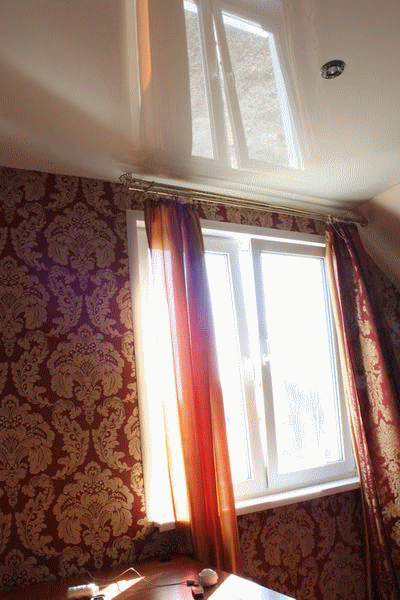
After talking with the readers, I recommend to pay attention to the controller Mi Casa Verde Vera 3, for «Fibaro - iPhone is among the controllers and Vera - it's an android. You do not want to lips curled into a tube you? ". Of course, for me it was not an argument, but would like to try something new. In addition, interested in some kind of a huge number of plug-ins for this controller, which I, in turn, were useful. But I will not get ahead of ourselves.
task The windows of my room are located on the south-eastern side. So, quickly enough after the first rays of dawn had already penetrated into the room. And the last rays of the sun disappear after 18 hours. Sometimes a busy schedule and enthusiasm for their work make it impossible to break away from the computer and turn on the lights after sunset - you have to go to the light switch only in the light of the monitor. Sometimes the opposite situation, when the amount of light in the room is such that we have to partially draw the curtains so as not to go blind, and maintain comfort for the eyes. Thus was born the problem: The room should be maintained given a comfortable brightness level automatically
. Methods
solutions Any problem should be divided into subtasks until until you see the most simple and effective solution.
So I started to look for solutions. The first and easiest was stepwise opening and closing curtains, depending on the time of day. And even these plug-ins already exist. But there is no feedback and the curtain will be covered, even when the window is the storm and dark clouds, and when brought down the location of half the globe, my curtains will open the night. I was not satisfied, so I went on his way.
The problem broke into the following stages.
If the time of day, that is, from 9 to 19:
1. monitor the level of brightness in the room with the help of
multisensor 2. If the brightness exceeds a comfortable, partly draw the curtains.
3. If the brightness level is lower than a comfortable, partly lifts the curtain
4. Go back to step 1
If night time:
1. draws the curtain completely
2. Change the brightness of artificial light discretely
3. To monitor the level of brightness in the room with the help of
multisensor 4.1. If the brightness level is lower than a comfortable, increased by 20%
4.2. If the brightness level is higher comfort, reduced by 20%
To blind not twitch back and forth with the ascended clouds or a bright flash, set the delta time and the brightness at which no action will be performed.
In their experiments, I used 5 smart home devices, working on Z-wave technology. I warn you that this material is not an advertisement, but the instructions to run the system, so I give the link to the devices involved me.
Devices 1. Controller Z-Wave Mi Casa Verde Vera 3
2. Multisensor AEOTEC 4 1
3. Built-in dimmer Z-Wave.Me Dimmer
4. Built-in dual-switch Z-Wave Fibaro Double Relay Switch 2x1.5kW
5. The micro-motor with gear
6. 4 channel relay for Arduino
Step 1
As I wrote, I have divided the work into 2 stages. The first - an automatic operation of lighting in the evening. If the light is not enough, then on the basis of data received from the light sensor, the controller increases the brightness of the light by using the dimmer. Since the main light I realized LED ribbons, the dimmer works only with auxiliary halogen lamps. It works this way: a light sensor sends data to the controller every 10 seconds, and the lighting check occurs every 20 seconds. This is to ensure that the random flash is not turned off all the lights. mounted dimmer itself is elementary. If the correct wiring, you shall burst phase, and fed to the lamps zero. Dimmer wire is inserted into the gap and easily registers in the controller. I have two lines of lamps installed, but since the dimmer allows you to adjust the lighting smoothly, they were involved in both. All work is reduced to the determination of the phase conductor and the screwdriver for two minutes: the first went to the removal of the old switch and the second-to connect dimmer
.
Step 2
The second stage - is to work with daylight. When the light is too bright, there are highlights and is a serious obstacle. Therefore, it was decided to automate zadergivanie curtains. With the mechanics started the biggest problem, because at first I took a high-speed, low-power but the engine, which was unable to turn the wheel. Then I changed the engine on a compact but with great effort through the use of gear. His power and speed suits me perfectly. Finishing touches were limited to the fact that the first ring was fixed thread curtains, and the engine twisting the yarn back and forth. It was originally planned to put the terminal sensors to monitor end positions curtains, but experience has shown that the thread tension is such that at the extremes of the motor pulley slips and does not tear. And at the usual movie has a good grip on the thread, which is provided by an additional tensioning roller. It looks like this:
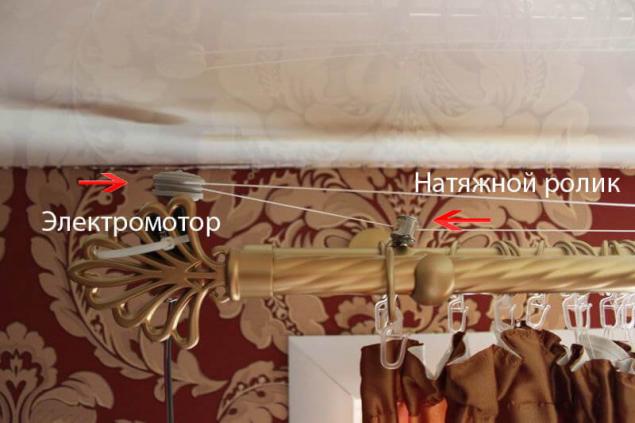
Learning the total time of the engine when moving from one extreme to the other, I just shared time on 4 and set the settings change in the position Blinds time the engine is running in one direction or another. DC motor has a reverse polarity when changing and here I was faced with the task of reverse polarity. A simple solution would be to use the three-position switch, but it was not easy to find. I come to the aid of the old experience and a little trickery.
I took a standard on-off switch in the amount of 4 pieces, pairs of linked for simultaneous switching on and off. And I manage them using the relay Z-Wave. The scheme is as follows:
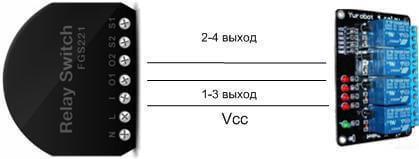
The scheme shows that when both pins 1 and 3, the motor will rotate in the same direction, and if 2 and 4, the motor will get different polarity and starts to rotate in the opposite direction. To avoid confusion and close the relay pairs, and even with the help of controller, I used the two-channel relay Fibaro Z-Wave. To work properly apply enough contacts on in1 and in3 +5 V, or the same tension on the water relay in2 and in4. Z-Wave device itself is endowed with two relays, but they work with the same input bus. This should be considered if you want to use such a switch as two different, for example, working with AC and DC. As a result, we obtained the following control scheme of the smart home controller 4 relays in pairs.
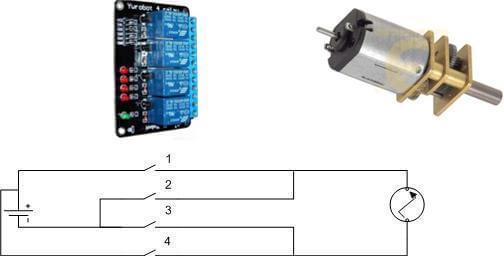
To supply this scheme required 5V DC and 220V AC. AC powered relay Z-Wave, and DC powered yardarm Arduino and an electric motor. For the whole system I had the old adapter from some appliance at 5V and 1A.
Now let's see how it works in reality
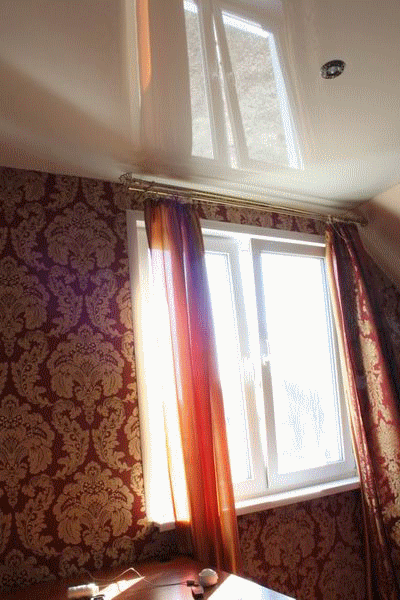
Put the pieces together, we get an algorithm that runs in time. The menu also virtual switch has been added that allows you to start or stop tracking mode of illumination. irradiance measurements were performed using a multisensor and controlling light meter. I must say that their testimonies differed with increasing illumination. I believe that this was due to the fact that the multisensor cover is made in such a way as to collect light from all areas and luxmeter sensor gives testimony to the plane of its sensor.
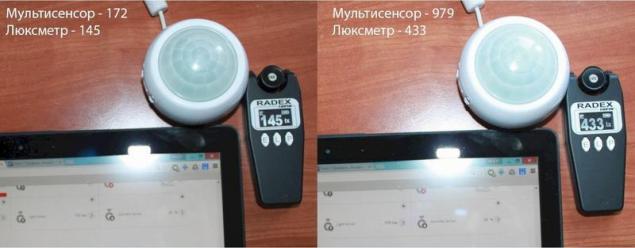
Conclusion
In the process of automatic light came to me and asked: "Is it really worth it?". But after the first draft of the alert, which I wrote at the beginning of the article, I realized that there is no limit of perfection. It's not even that there is an opportunity to feel the new technology or control the light without getting up from his chair. Smart House - a completely different condition of the house. How do you explain the fact that in the boiler room for the whole winter I dropped 4 times, simply by adjusting the temperature of the boiler depending on the "season"? At the same time he worked in the boiler clocks lowest cost of electricity (two-tariff counter). Or how to evaluate the comfort of living in a house where there is always fresh, and the ventilation system is working quietly and independently, she switched on and off?
The whole life of a smart home is made up of little things that, in principle, can be done yourself, but the knowledge that you will come to the house and be sure that all systems are functioning properly - here really know what "It's worth it!" .
But today I do not want to talk about this, and about how my smart home has helped to build a comfortable and sleep mode. And we will work with light in all possible ways.
Driving home, you can for a given algorithm, a computer or a smartphone - such were my requirements for this technique
.

After talking with the readers, I recommend to pay attention to the controller Mi Casa Verde Vera 3, for «Fibaro - iPhone is among the controllers and Vera - it's an android. You do not want to lips curled into a tube you? ". Of course, for me it was not an argument, but would like to try something new. In addition, interested in some kind of a huge number of plug-ins for this controller, which I, in turn, were useful. But I will not get ahead of ourselves.
task The windows of my room are located on the south-eastern side. So, quickly enough after the first rays of dawn had already penetrated into the room. And the last rays of the sun disappear after 18 hours. Sometimes a busy schedule and enthusiasm for their work make it impossible to break away from the computer and turn on the lights after sunset - you have to go to the light switch only in the light of the monitor. Sometimes the opposite situation, when the amount of light in the room is such that we have to partially draw the curtains so as not to go blind, and maintain comfort for the eyes. Thus was born the problem: The room should be maintained given a comfortable brightness level automatically
. Methods
solutions Any problem should be divided into subtasks until until you see the most simple and effective solution.
So I started to look for solutions. The first and easiest was stepwise opening and closing curtains, depending on the time of day. And even these plug-ins already exist. But there is no feedback and the curtain will be covered, even when the window is the storm and dark clouds, and when brought down the location of half the globe, my curtains will open the night. I was not satisfied, so I went on his way.
The problem broke into the following stages.
If the time of day, that is, from 9 to 19:
1. monitor the level of brightness in the room with the help of
multisensor 2. If the brightness exceeds a comfortable, partly draw the curtains.
3. If the brightness level is lower than a comfortable, partly lifts the curtain
4. Go back to step 1
If night time:
1. draws the curtain completely
2. Change the brightness of artificial light discretely
3. To monitor the level of brightness in the room with the help of
multisensor 4.1. If the brightness level is lower than a comfortable, increased by 20%
4.2. If the brightness level is higher comfort, reduced by 20%
To blind not twitch back and forth with the ascended clouds or a bright flash, set the delta time and the brightness at which no action will be performed.
In their experiments, I used 5 smart home devices, working on Z-wave technology. I warn you that this material is not an advertisement, but the instructions to run the system, so I give the link to the devices involved me.
Devices 1. Controller Z-Wave Mi Casa Verde Vera 3
2. Multisensor AEOTEC 4 1
3. Built-in dimmer Z-Wave.Me Dimmer
4. Built-in dual-switch Z-Wave Fibaro Double Relay Switch 2x1.5kW
5. The micro-motor with gear
6. 4 channel relay for Arduino
Step 1
As I wrote, I have divided the work into 2 stages. The first - an automatic operation of lighting in the evening. If the light is not enough, then on the basis of data received from the light sensor, the controller increases the brightness of the light by using the dimmer. Since the main light I realized LED ribbons, the dimmer works only with auxiliary halogen lamps. It works this way: a light sensor sends data to the controller every 10 seconds, and the lighting check occurs every 20 seconds. This is to ensure that the random flash is not turned off all the lights. mounted dimmer itself is elementary. If the correct wiring, you shall burst phase, and fed to the lamps zero. Dimmer wire is inserted into the gap and easily registers in the controller. I have two lines of lamps installed, but since the dimmer allows you to adjust the lighting smoothly, they were involved in both. All work is reduced to the determination of the phase conductor and the screwdriver for two minutes: the first went to the removal of the old switch and the second-to connect dimmer
.

Step 2
The second stage - is to work with daylight. When the light is too bright, there are highlights and is a serious obstacle. Therefore, it was decided to automate zadergivanie curtains. With the mechanics started the biggest problem, because at first I took a high-speed, low-power but the engine, which was unable to turn the wheel. Then I changed the engine on a compact but with great effort through the use of gear. His power and speed suits me perfectly. Finishing touches were limited to the fact that the first ring was fixed thread curtains, and the engine twisting the yarn back and forth. It was originally planned to put the terminal sensors to monitor end positions curtains, but experience has shown that the thread tension is such that at the extremes of the motor pulley slips and does not tear. And at the usual movie has a good grip on the thread, which is provided by an additional tensioning roller. It looks like this:

Learning the total time of the engine when moving from one extreme to the other, I just shared time on 4 and set the settings change in the position Blinds time the engine is running in one direction or another. DC motor has a reverse polarity when changing and here I was faced with the task of reverse polarity. A simple solution would be to use the three-position switch, but it was not easy to find. I come to the aid of the old experience and a little trickery.
I took a standard on-off switch in the amount of 4 pieces, pairs of linked for simultaneous switching on and off. And I manage them using the relay Z-Wave. The scheme is as follows:

The scheme shows that when both pins 1 and 3, the motor will rotate in the same direction, and if 2 and 4, the motor will get different polarity and starts to rotate in the opposite direction. To avoid confusion and close the relay pairs, and even with the help of controller, I used the two-channel relay Fibaro Z-Wave. To work properly apply enough contacts on in1 and in3 +5 V, or the same tension on the water relay in2 and in4. Z-Wave device itself is endowed with two relays, but they work with the same input bus. This should be considered if you want to use such a switch as two different, for example, working with AC and DC. As a result, we obtained the following control scheme of the smart home controller 4 relays in pairs.

To supply this scheme required 5V DC and 220V AC. AC powered relay Z-Wave, and DC powered yardarm Arduino and an electric motor. For the whole system I had the old adapter from some appliance at 5V and 1A.
Now let's see how it works in reality

Put the pieces together, we get an algorithm that runs in time. The menu also virtual switch has been added that allows you to start or stop tracking mode of illumination. irradiance measurements were performed using a multisensor and controlling light meter. I must say that their testimonies differed with increasing illumination. I believe that this was due to the fact that the multisensor cover is made in such a way as to collect light from all areas and luxmeter sensor gives testimony to the plane of its sensor.

Conclusion
In the process of automatic light came to me and asked: "Is it really worth it?". But after the first draft of the alert, which I wrote at the beginning of the article, I realized that there is no limit of perfection. It's not even that there is an opportunity to feel the new technology or control the light without getting up from his chair. Smart House - a completely different condition of the house. How do you explain the fact that in the boiler room for the whole winter I dropped 4 times, simply by adjusting the temperature of the boiler depending on the "season"? At the same time he worked in the boiler clocks lowest cost of electricity (two-tariff counter). Or how to evaluate the comfort of living in a house where there is always fresh, and the ventilation system is working quietly and independently, she switched on and off?
The whole life of a smart home is made up of little things that, in principle, can be done yourself, but the knowledge that you will come to the house and be sure that all systems are functioning properly - here really know what "It's worth it!" .
























